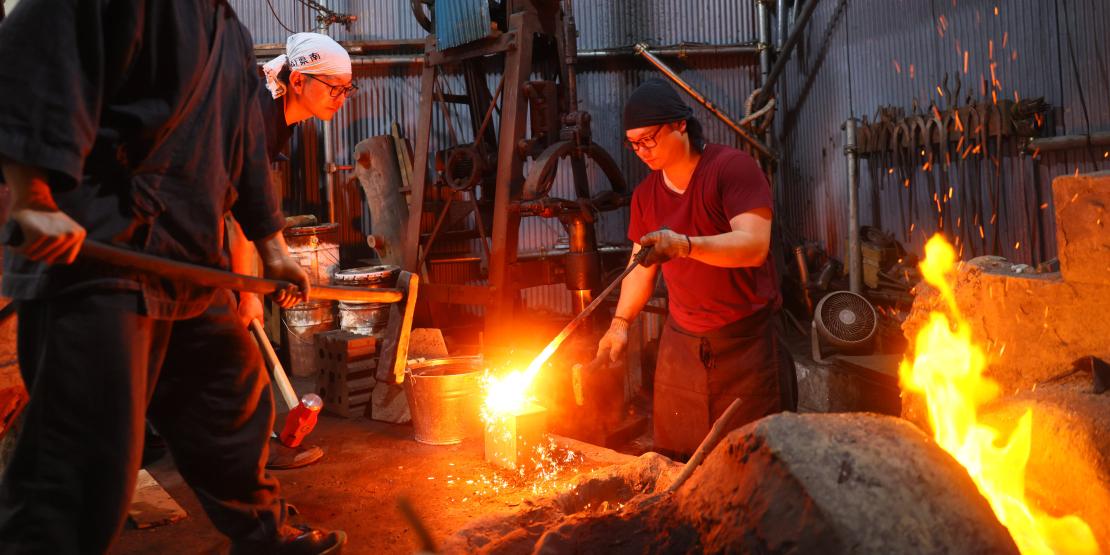
Okutama has been home to people since the Jomon period.
During the Edo period, the expansion of Edo city created a surge in demand, leading to flourishing timber extraction in the region.
Today, Okutama continues to preserve many traditional performing arts, including the Kashima-odori dance, which has been designated as an Intangible Folk Cultural Property.
The Tama region, located in western Tokyo, is also home to swordsmiths who craft Japanese swords, kitchen knives, and various other blades.
The beautiful natural landscapes of the Tama region have long been cherished by numerous literary figures and artists. Today,
Ome City is home to cultural institutions such as the Eiji Yoshikawa Memorial Hall and the Gyokudo Art Museum.
Nihonto (Katana, Japanese swords)
Nihonto, or Japanese swords are a general term for bladed weapons crafted using methods unique to Japan.
Japanese swords produced between 901 and 1595 are referred to as “kotō, or old swords.” Many of the most celebrated swards designated as National Treasures or Important Cultural Properties were forged during this kotō period.
Since ancient times, swords in Japan have been revered as divine objects, used in Shinto rituals, festivals, and traditional performing arts.
A sword is also one of the three sacred treasures—known as the Imperial Regalia—passed down through successive emperors.
Japanese swords were designed with the purpose of protecting oneself and those important to them.
To fulfill such a role, they must inspire a profound sense of security. It is not merely their cutting ability that is essential; their craftsmanship must be so refined that even a single glance conveys their sharpness and power—only then can they be entrusted with the “duty of protection”.
In the Meiji era (1868-1912), the government enacted the Haitōrei (Sword Abolishment Edict). As a result, many swordsmiths redirected their expertise toward the production of kitchen knives and other tools. The sophisticated techniques developed for Japanese swords were thus passed down and transformed into the foundation of today’s world-renowned Japanese cutlery craftsmanship.
In modern Japan, swordsmiths are required to obtain a national certification before they can produce Japanese swords. At present, there are approximately 170 licensed swordsmiths in Japan. These individuals are recognized as highly skilled artisans who carry on a rare and valuable tradition.
